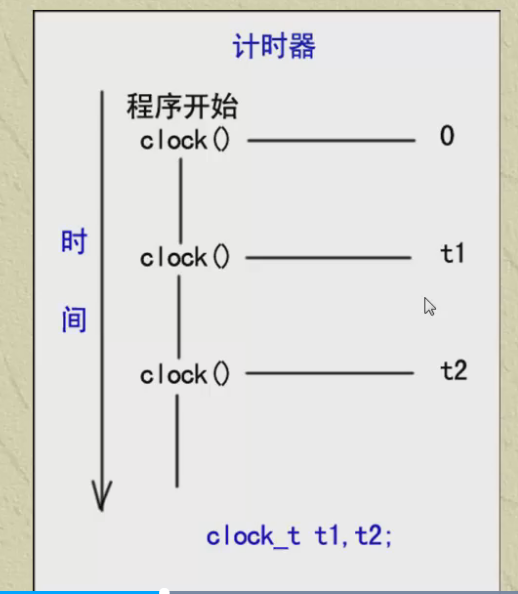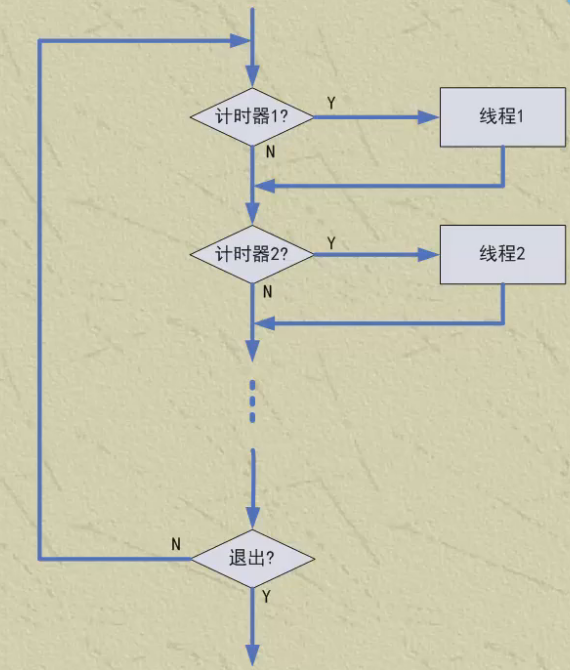计时器
计时器是需要引入头文件”ctime”,通过函数 clock() 来获得时间
需要使用CLOCKS_PER_SEC这个玩意来转换

#include <iostream>#include <ctime>using namespace std;int main() {clock_t t1, t2;long n = 1000000;t1 = clock();while(n--);t2 = clock();cout << t1 << "," << t2 << endl;}// 输出
延时计时器
如果调用系统 sleep 函数,那么程序被挂起,不能进行别的操作;如果使用计时器进行延时,只是每个循环进行读系统时间,从而其他操作还可以进行
使用小球移动的代码
#include <windows.h>#include <iostream>using namespace std;void gotoxy(int x, int y){HANDLE h;COORD c;c.X = x;c.Y = y;h = GetStdHandle(STD_OUTPUT_HANDLE);SetConsoleCursorPosition(h, c);}void move(int x0, int y0){int x = x0, y = y0;while (true){gotoxy(x, y);cout << "+";Sleep(10);gotoxy(x, y);cout << " ";++x;if (x >= 100) x = 0; // 等价于 x = x % 100;}}int main(){move(0, 10);return 0;}
只关注 move() 函数,下面进行修改
void move(int x0, int y0){int x = x0, y = y0;clock_t t;t = clock();while (true){gotoxy(x, y);cout << "+";if(clock() - t > 10) {gotoxy(x, y);cout << " ";++x;if (x >= 100) x = 0; // 等价于 x = x % 100;t = clock();}}}
但是这样的结果,小球会产生闪烁 —- 原因在于不管到没到时间,都执行 goto 画小球。
改进的思想就是如果没有擦除小球,就不要重新绘制小球。通过加入标识flag修改
void move(int x0, int y0){int x = x0, y = y0;clock_t t;t = clock();bool flag = true;while (true){if (flag == true) {gotoxy(x, y);cout << "+";flag = false;}if(clock() - t > 10) {gotoxy(x, y);cout << " ";flag = true;++x;if (x >= 100) x = 0; // 等价于 x = x % 100;t = clock();}}}
多线程
自己写多线程
这里的多线程是受到操作系统的限制的,windows分配给这个程序的最小时间间隔是10ms
在小球移动程序的基础上,通过多线程和计时器,实现多个小球同时移动
void move(int x0, int y0){int x1 = x0, y1 = y0;int x2 = x0, y2 = y0 + 10;clock_t t1, t2;t2 = t1 = clock();bool flag1 = true, flag2 = true;while (true){if (flag1 == true) {gotoxy(x1, y1);cout << "+";flag1 = false;}if(clock() - t1 > 10) {gotoxy(x1, y1);cout << " ";flag1 = true;++x1;if (x1 >= 100) x1 = 0; // 等价于 x = x % 100;}if (flag2 == true) {gotoxy(x2, y2);cout << "+";flag2 = false;}if(clock() - t2 > 20) { // 第二个小球运动慢一点gotoxy(x2, y2);cout << " ";flag2 = true;++x2;if (x2 >= 100) x2 = 0; // 等价于 x = x % 100;}}}

